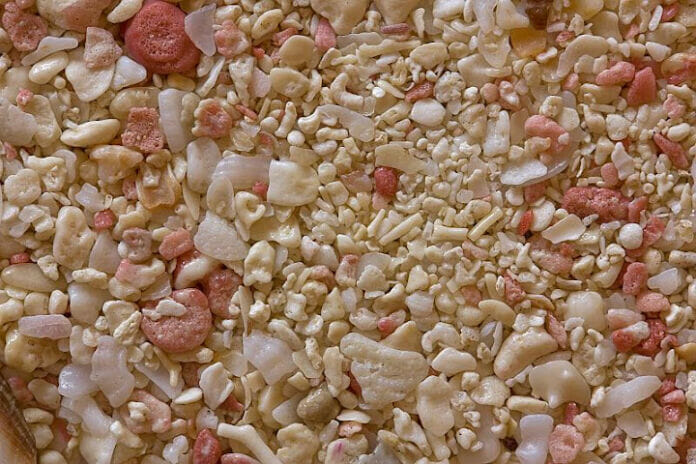What minerals is sand composed of?
Most sand on the beach consists of grains of the mineral quartz (SiO2). Mineral sands are old beach, river or dune sands that contain concentrations of the important minerals, rutile, ilmenite, zircon and monazite.
What type of soil is in Bermuda?
Fossil soils, or palaeosols, are thin undulating layers of sandy clay that run through Bermuda's limestones and, in some cases, separate the geological formations (Chapter 5). They originally formed as surface soils on ancient landscapes where plants and trees grew.
Does white sand have calcium?
The beach sand on tropical islands often looks white because it is made up of calcium carbonate, which comes from the shells and skeletons of reef-living marine organisms, including corals, mollusks and microorganisms called foraminifera.
Is beach sand a mineral?
Sand itself is not a mineral. It is a sediment just like clay, gravel and silt. Most common sand-forming mineral is quartz.
Does sand contain diamonds?
Diamond occurs as a detrital mineral but its concentration in sand is always very low. However, diamond-bearing kimberlite pipes are often found by working through many fluvial sand samples but it is not diamond that prospectors are looking for.
What is the main mineral in sand?
Well, much of the world's sand is made out of the same stuff, tiny crystals of the mineral quartz, which is made out of silica and oxygen, the two most common elements in Earth's crust.
What gemstones can be found in sand?
Sand minerals
What is the black mineral in sand?
This black sand is mainly composed of ilmenite, magnetite, garnet, zircon and rutile. Also present, in minor or trace amounts, are quartz, sphene, pyroxenes, sillimanite, feldspars, biotite, haematite, tourmaline, chromite, niobian-rutile and pyrrhotite.
What kind of sand makes glass?
Silica sand
Can glass turn back into sand?
But when it is ground down enough, the difference isn't obvious. Crushed glass is sold as an alternative to sand for pool filters – in fact, recycled crushed glass has been considered as a partial replacement for the sand on some of Florida's eroding beaches.
What happens when you burn sand?
When sand is burnt, silicon dioxide is in the air as it bonds to oxygen molecules, so sand is already Burned and wont catch fire if you set fire on it. This is mainly due to the absence of unoxidized silicon in the sand.
Where is the best sand for glass?
The sand deposits required by the glass industry are generally fossil beach, river, lake or wind deposit due to their specific chemical and physical properties.
Is sea glass worth any money?
Prices can vary widely, from pennies per piece for small pieces in odd shapes with chips and flaws (sometimes called “roughs”) to flawless, nicely shaped, jewelry quality pieces that might sell for $5-10 each if they are rare colors like deep aqua or cobalt blue.
What is the rarest sea glass?
The Seven Ultra Rare Sea Glass Colors
Can glass be made from any sand?
You can make glass by heating ordinary sand (which is mostly made of silicon dioxide) until it melts and turns into a liquid. You won't find that happening on your local beach: sand melts at the incredibly high temperature of 1700°C (3090°F).
What temperature does sand turn to glass?
3090°F
Does lightning make glass in sand?
When it hits a sandy beach high in silica or quartz and the temperature goes beyond 1800 degrees Celsius, the lighting can fuse the sand into silica glass. The blast of a billion Joules radiates through the ground making fulgurite — hollow, glass-lined tubes with a sandy outside. Petrified lightning.
What is the original source of glass?
The history of glass-making dates back to at least 3,600 years ago in Mesopotamia. However, some writers claim that they may have been producing copies of glass objects from Egypt. Other archaeological evidence suggests that the first true glass was made in coastal north Syria, Mesopotamia or Egypt.
What color is glass naturally?
The color of "natural glass" usually varies between green and bluish green, based on the differing amounts of naturally occurring "impurities" of iron in the sand. Even today, common glass usually has a slight green or blue tint, arising from the same types of impurities.
Did Vikings have glass?
Glass was used in a number of ways by the Saxons and Vikings; for drinking vessels, window glass, jewellery, enamelling and beads. Remains of glass making furnaces have been found in York and Glastonbury.
Which country is famous for glass industry?
China was the leading glass exporting country, reaching a value of over 18 billion U
dollars the same year.
Which country has best glass?
As Susan mentioned, Murano Italy is widely known for its glass blowing.
Who makes the best glass?
Top 10 Largest Glass Companies in 2020
Who made glass first?
Little is known about the first attempts to make glass. However, it is generally believed that glassmaking was discovered 4,000 years ago, or more, in Mesopotamia. The Roman historian Pliny attributed the origin of glassmaking to Phoenician sailors.
What is the oldest glass?
Obsidian
